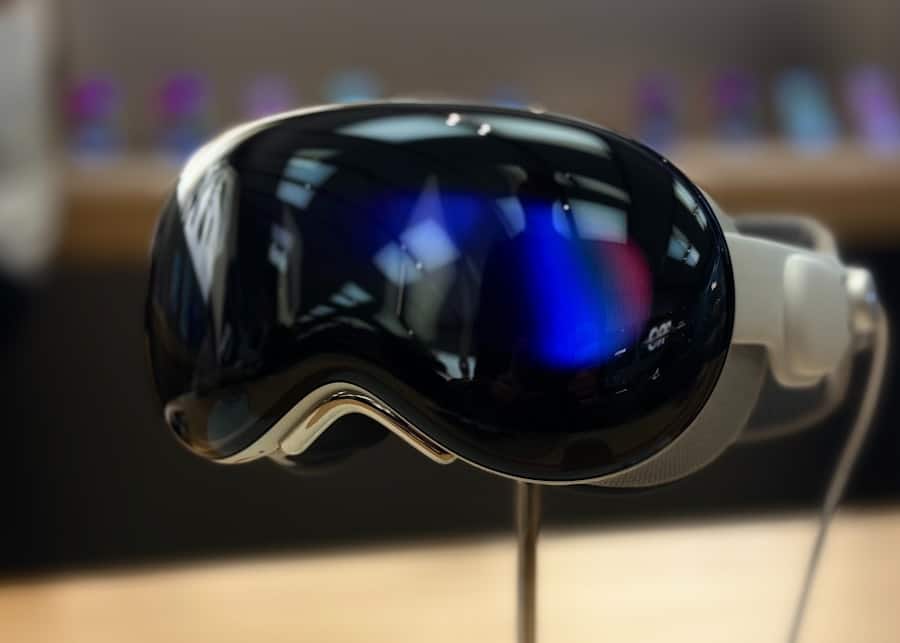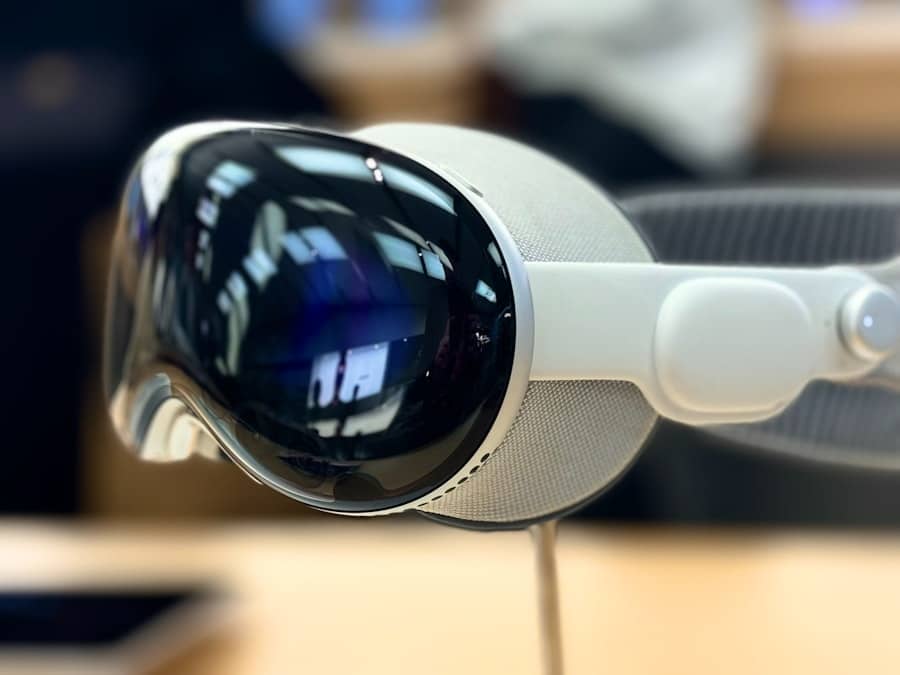Mixed reality (MR) represents a convergence of the physical and digital worlds, allowing users to interact with both environments simultaneously. This technology has gained traction in various sectors, including education, healthcare, and entertainment, but its most exhilarating applications are emerging in the realm of competitive gaming. By blending augmented reality (AR) and virtual reality (VR), mixed reality creates immersive experiences that can transform how players engage with games and how audiences experience competitive events.
The potential for MR to redefine competitive gaming is immense, as it not only enhances gameplay but also fosters deeper connections between players and their environments. In competitive gaming, where precision, strategy, and real-time decision-making are paramount, mixed reality can provide players with unique advantages. Imagine a first-person shooter where players can see their real-world surroundings overlaid with digital elements, such as enemy locations or tactical information.
This integration can lead to more dynamic gameplay and a heightened sense of immersion. As developers continue to explore the capabilities of MR, the landscape of competitive gaming is poised for significant evolution, promising new forms of engagement and interaction that were previously unimaginable.
Key Takeaways
- Mixed reality is a combination of virtual and augmented reality that has the potential to revolutionize competitive gaming.
- Current applications of mixed reality in competitive gaming include enhancing player experience and providing new perspectives for spectators.
- Mixed reality has the potential to impact competitive gaming by creating more immersive and interactive experiences for players and spectators.
- Challenges and limitations of mixed reality in competitive gaming include technical issues, cost, and potential barriers to entry for some players.
- The integration of mixed reality in esports tournaments can enhance the overall viewing experience and attract new audiences to competitive gaming events.
- Mixed reality can enhance spectator experience by providing new perspectives, interactive elements, and a more immersive viewing experience.
- The future of mixed reality hardware and software in competitive gaming is likely to include advancements in technology, improved user interfaces, and more affordable options for players and organizers.
- Ethical and regulatory considerations for mixed reality in competitive gaming include issues related to privacy, fairness, and potential health and safety concerns for players and spectators.
Current Applications of Mixed Reality in Competitive Gaming
Currently, several games and platforms are pioneering the use of mixed reality in competitive gaming. One notable example is Microsoft’s “Halo: Recruit,” which utilizes the HoloLens to immerse players in the Halo universe. Players can interact with holographic characters and environments while still being aware of their physical surroundings.
This blend of real and virtual elements not only enhances the gaming experience but also allows for innovative gameplay mechanics that leverage the strengths of mixed reality. Another prominent application is “Pokémon GO,” which, while primarily an augmented reality game, incorporates elements of mixed reality by allowing players to interact with Pokémon in real-world locations. Competitive events such as Pokémon GO Fest have utilized this technology to create immersive experiences where players can battle and catch Pokémon in a shared physical space.
The game’s success demonstrates how mixed reality can foster community engagement and competition, as players gather in parks or urban areas to participate in challenges that blend the digital and physical realms.
The Potential Impact of Mixed Reality on Competitive Gaming

The potential impact of mixed reality on competitive gaming is profound, as it opens up new avenues for gameplay innovation and player interaction. One significant aspect is the ability to create more engaging and interactive environments. For instance, MR can facilitate real-time strategy games where players can manipulate digital units on a physical tabletop, enhancing the tactile experience of gameplay.
This could lead to a resurgence of interest in genres that rely heavily on spatial awareness and strategic planning. Moreover, mixed reality can enhance collaboration among players. In team-based games, MR can provide visual cues and shared information that improve communication and coordination.
For example, players could see their teammates’ positions and health status overlaid in their field of vision, allowing for more strategic decision-making during high-stakes moments. This level of integration could elevate team dynamics and foster a deeper sense of camaraderie among players, ultimately leading to more intense and memorable competitive experiences.
Challenges and Limitations of Mixed Reality in Competitive Gaming
Despite its promising potential, the integration of mixed reality into competitive gaming faces several challenges and limitations. One primary concern is the technological barrier associated with MR hardware. High-quality mixed reality experiences often require advanced devices that may not be accessible to all players.
The cost of equipment like HoloLens or other MR headsets can be prohibitive, creating disparities in access among gamers. This economic divide could hinder the widespread adoption of MR in competitive gaming, limiting its impact to a niche audience. Additionally, there are technical challenges related to latency and performance.
In competitive gaming, even a slight delay can significantly affect gameplay outcomes. Ensuring that mixed reality systems operate seamlessly without lag is crucial for maintaining fairness and competitiveness. Developers must invest in optimizing software and hardware to minimize latency issues while delivering high-quality graphics and interactions.
Furthermore, the complexity of integrating MR into existing game engines poses additional hurdles that developers must navigate to create cohesive experiences.
The Integration of Mixed Reality in Esports Tournaments
The integration of mixed reality into esports tournaments is an exciting frontier that could redefine how competitions are conducted and experienced by both players and spectators. Some esports organizations have begun experimenting with MR elements during live events, enhancing the overall atmosphere and engagement levels. For instance, tournaments could incorporate holographic displays that showcase player statistics or highlight key moments during matches, providing audiences with a richer understanding of the gameplay dynamics.
Moreover, MR can facilitate unique tournament formats that leverage its capabilities. Imagine a battle royale tournament where players compete in a physical arena while interacting with digital elements projected onto the environment. This could create a more immersive experience for both participants and viewers, blurring the lines between traditional sports and esports.
As tournament organizers explore these possibilities, they may discover innovative ways to attract larger audiences and create memorable events that resonate with fans.
The Role of Mixed Reality in Enhancing Spectator Experience

Mixed reality has the potential to revolutionize the spectator experience in competitive gaming by providing audiences with new ways to engage with content. Traditional esports broadcasts often rely on static camera angles and overlays to convey information about matches; however, MR can introduce dynamic visualizations that enhance storytelling during gameplay. For example, spectators could use MR headsets to view matches from different perspectives or access real-time data about player performance through interactive overlays.
Furthermore, MR can facilitate social interactions among fans during live events or online streams. Spectators could gather in virtual spaces where they can discuss strategies or share insights while watching matches unfold in real time. This communal aspect could foster a sense of belonging among fans, creating a more vibrant esports culture.
As developers continue to innovate in this space, the spectator experience will likely evolve into something far more interactive and engaging than ever before.
The Future of Mixed Reality Hardware and Software in Competitive Gaming
The future of mixed reality hardware and software in competitive gaming is poised for rapid advancement as technology continues to evolve. Companies are investing heavily in research and development to create more affordable and accessible MR devices that cater to gamers’ needs. As hardware becomes more sophisticated, we can expect improvements in visual fidelity, tracking accuracy, and overall user experience.
On the software side, game developers are increasingly exploring how to leverage MR capabilities within their titles. As game engines become more adept at integrating mixed reality features, we may see an influx of new games designed specifically for MR environments.
This could lead to entirely new genres emerging within competitive gaming that capitalize on the unique strengths of mixed reality technology. The synergy between hardware advancements and innovative software development will be crucial in shaping the future landscape of competitive gaming.
Ethical and Regulatory Considerations for Mixed Reality in Competitive Gaming
As mixed reality continues to permeate competitive gaming, ethical and regulatory considerations will become increasingly important. One major concern revolves around data privacy and security. Mixed reality systems often require access to personal data or real-world environments for optimal functionality.
Ensuring that user data is protected from misuse or unauthorized access will be paramount as developers implement these technologies. Additionally, there are questions regarding fairness and integrity within competitive gaming environments enhanced by mixed reality. As players gain access to advanced tools that provide them with strategic advantages through MR overlays or real-time data analysis, regulatory bodies will need to establish guidelines to ensure a level playing field.
This may involve creating standards for what constitutes acceptable use of mixed reality technology during competitions. In conclusion, as mixed reality continues to evolve within the realm of competitive gaming, it brings forth both exciting opportunities and significant challenges that stakeholders must navigate carefully. The interplay between technological advancements, player engagement, ethical considerations, and regulatory frameworks will shape the future landscape of this dynamic intersection between gaming and technology.
In the rapidly evolving world of competitive gaming, mixed reality is poised to revolutionize the way players and audiences experience games. As we explore the potential of this technology, it’s essential to consider the tools that can enhance the gaming experience. For instance, screen recording software plays a crucial role in capturing and sharing gameplay moments, which is vital for both players and content creators. To delve deeper into the best options available, you might find the article The Ultimate Guide to the Best Screen Recording Software in 2023 particularly insightful. This guide provides a comprehensive overview of the top software choices, ensuring that gamers can effectively document and share their mixed reality experiences.
FAQs
What is mixed reality in competitive gaming?
Mixed reality in competitive gaming refers to the integration of virtual and physical elements in a gaming environment. It allows players to interact with both real and virtual objects simultaneously, creating a more immersive and interactive gaming experience.
How is mixed reality used in competitive gaming?
Mixed reality is used in competitive gaming to enhance the player’s experience by overlaying virtual elements onto the real world. This can include virtual objects, characters, or environments that are integrated into the physical gaming space.
What are the potential benefits of mixed reality in competitive gaming?
The potential benefits of mixed reality in competitive gaming include increased immersion, enhanced interactivity, and the ability to create unique and innovative gaming experiences. It also has the potential to attract a wider audience and create new opportunities for competitive gaming events.
What are some examples of mixed reality in competitive gaming?
Examples of mixed reality in competitive gaming include augmented reality (AR) games that overlay virtual elements onto the real world, virtual reality (VR) games that create immersive virtual environments, and mixed reality experiences that combine elements of both AR and VR.
What is the future of mixed reality in competitive gaming?
The future of mixed reality in competitive gaming is expected to continue to grow and evolve, with advancements in technology leading to more immersive and interactive gaming experiences. This could include the development of new mixed reality gaming platforms, innovative game designs, and the integration of mixed reality into competitive gaming events and tournaments.

